Documenting Cultural Heritage Destruction and Preservation in Ukrainian Cities in Conflict
Background and Scope
Our project delves into the urgent and critical theme of documenting cultural heritage in Ukrainian cities, focusing particularly on those who have been or are at risk of being affected by the ongoing conflict. The cities of Kyiv, Lviv, Mariupol, Kharkiv, Chernihiv, and Odesa serve as primary case studies. These cities not only house Ukraine’s rich monuments and sites but also have experienced the most severe damage. For the project, we lay out maps of various documentation and preservation efforts in relation to the map of destroyed sites. In addition, we discuss the power dynamic of the involved stakeholders, including local and international institutions and organizations.
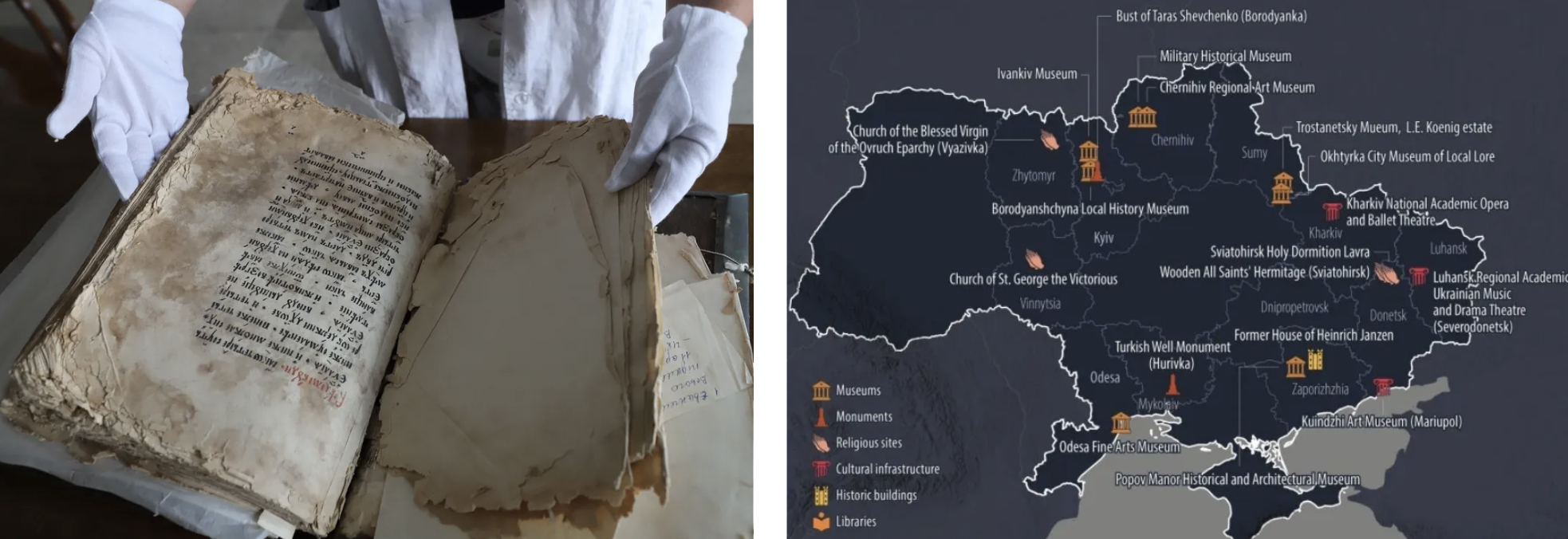 (Many items in storage were already in fragile condition before the Russian invasion and now face additional conservation challenges). Courtesy of National Research and Restoration Center
(Many items in storage were already in fragile condition before the Russian invasion and now face additional conservation challenges). Courtesy of National Research and Restoration Center
Argument
The project touches upon the themes of memory, identity, resilience, and heritage. Collateral damage or deliberate targeting of cultural heritage sites not only results in the loss of material artifacts; it also assaults the collective memory and identity of a people and culture. This project refers to the theories of strategic use of cultural destruction as a weapon of war. The ways local communities document and preserve cultural heritage also present the resilience of urban spaces and communities in conflict zones.
Spatial Data Source
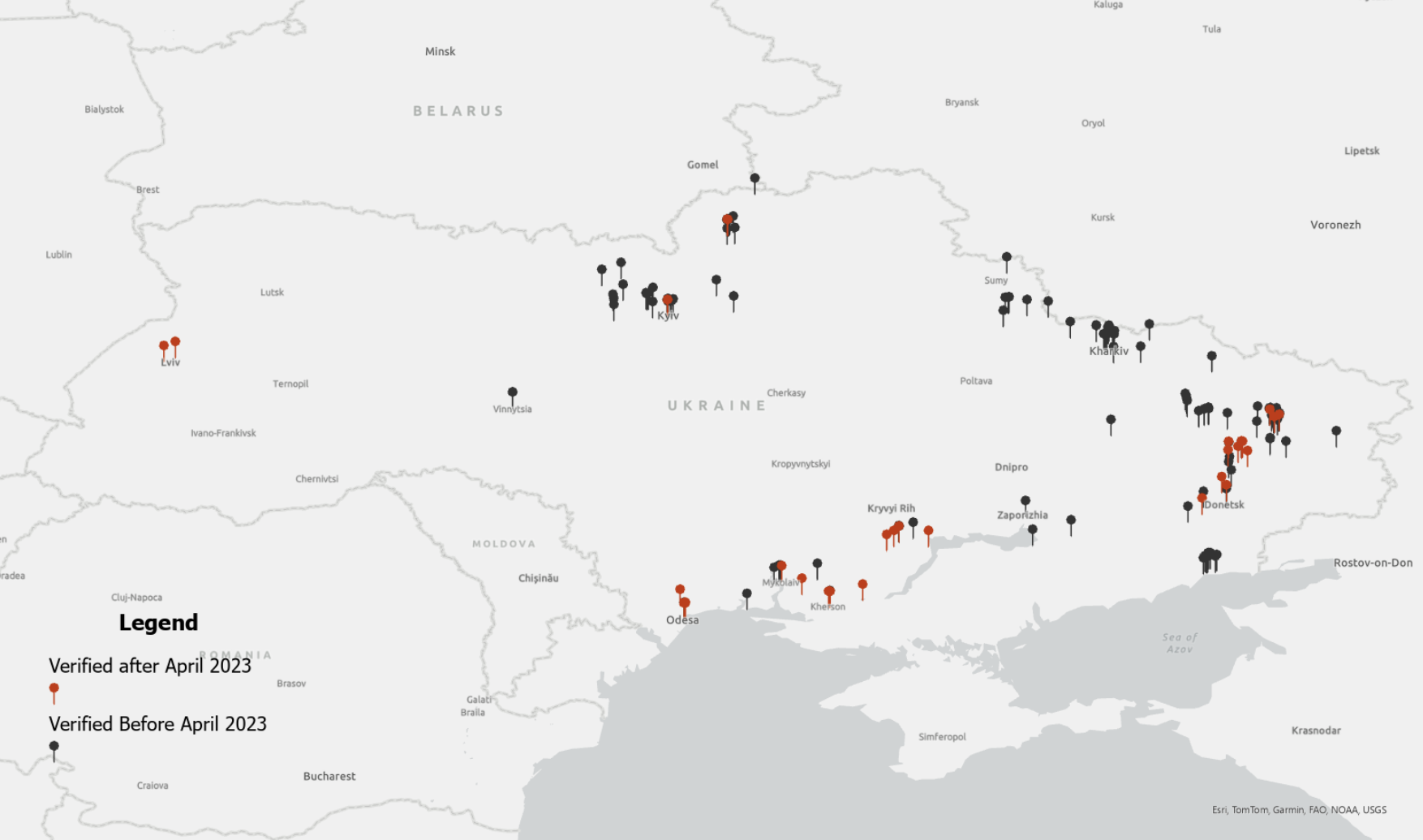
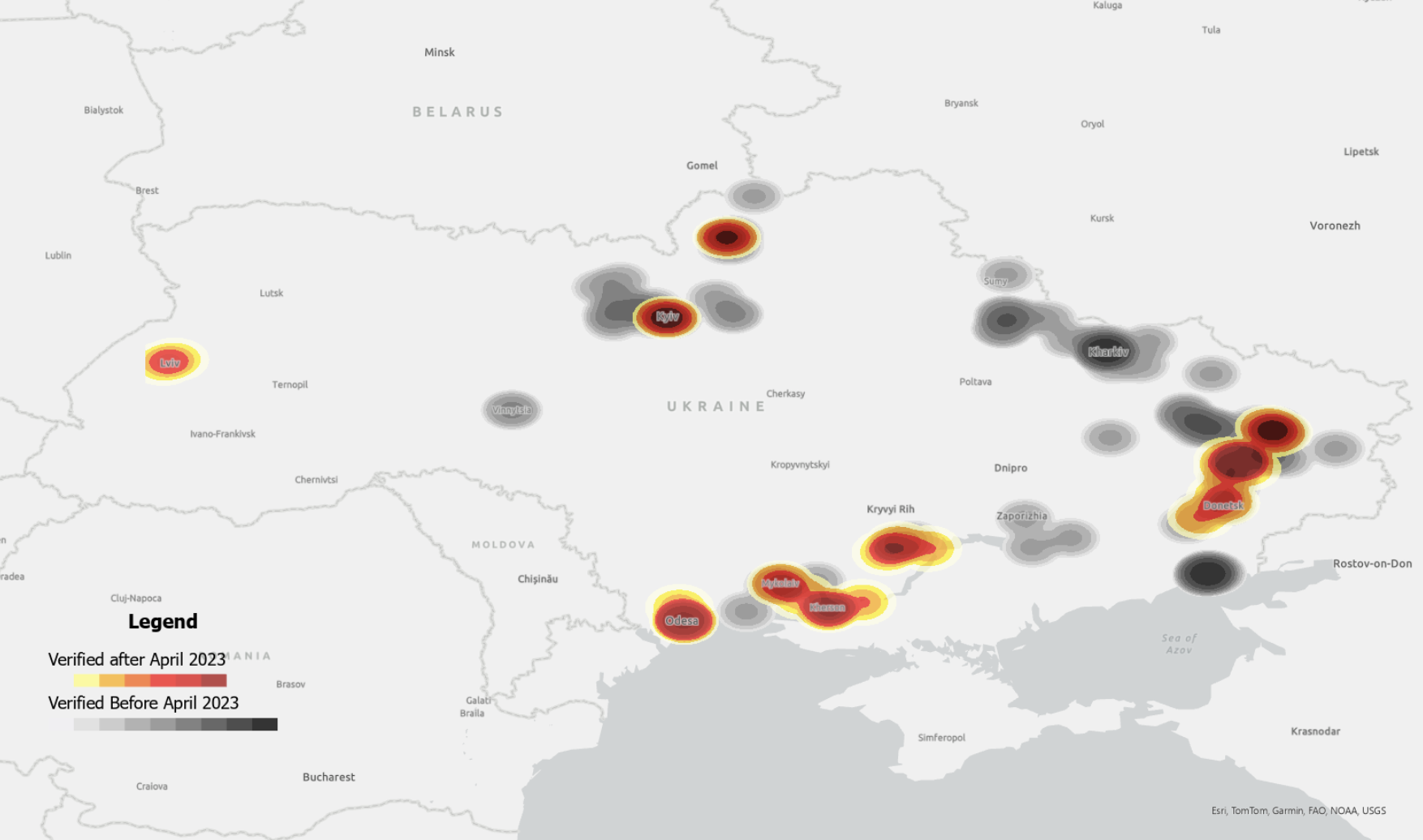
Suplemented Data Set
Download the full dataset here.
Preservation Activities
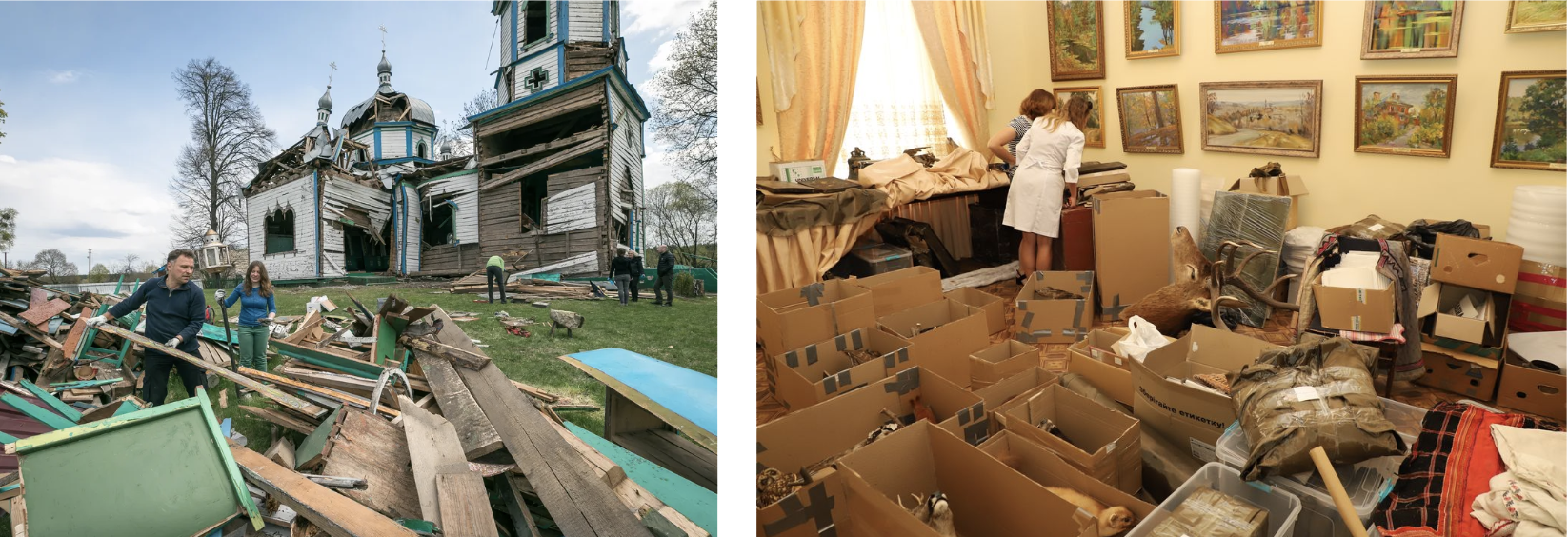
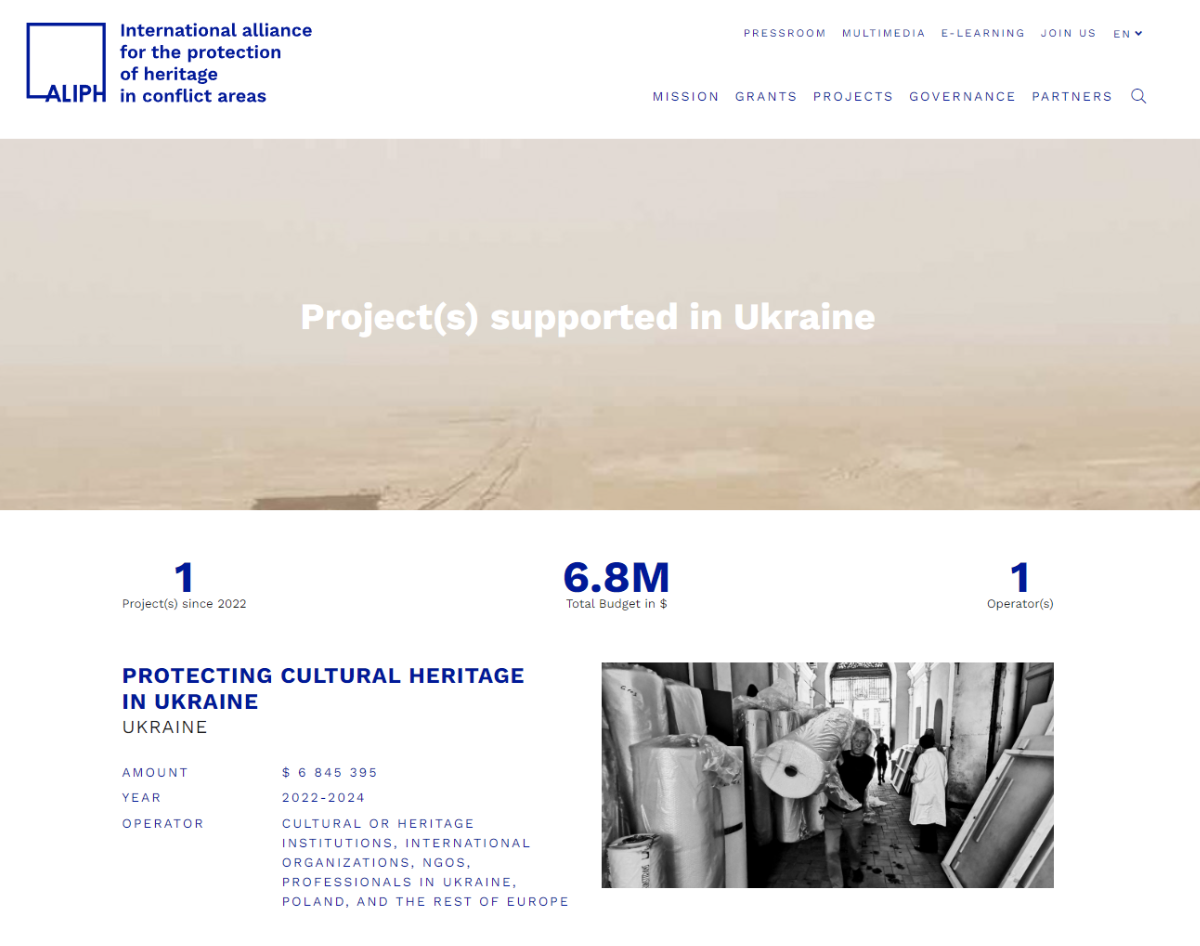
Preservation on the ground had been the most direct and efficient practice. The International Alliance For the Protection of Heritage in Conflict Areas has been one key player in preservation activities on the ground. In March 2022, the Foundation adopted its Action Plan with USD 5 million of its own funds, and further contributions have been made by: The EU; Getty Foundation; the US Ambassadors Fund for Cultural Preservation, and the Principality of Monaco. The preservation efforts include: support to museums, libraries, archives, and cultural heritage institutions; providing large storage areas for artifacts; the creation of “heritage ambulances” with the National Research and Restoration Center of Ukraine; 3D documentation and photogrammetry; and direct support to heritage professionals.
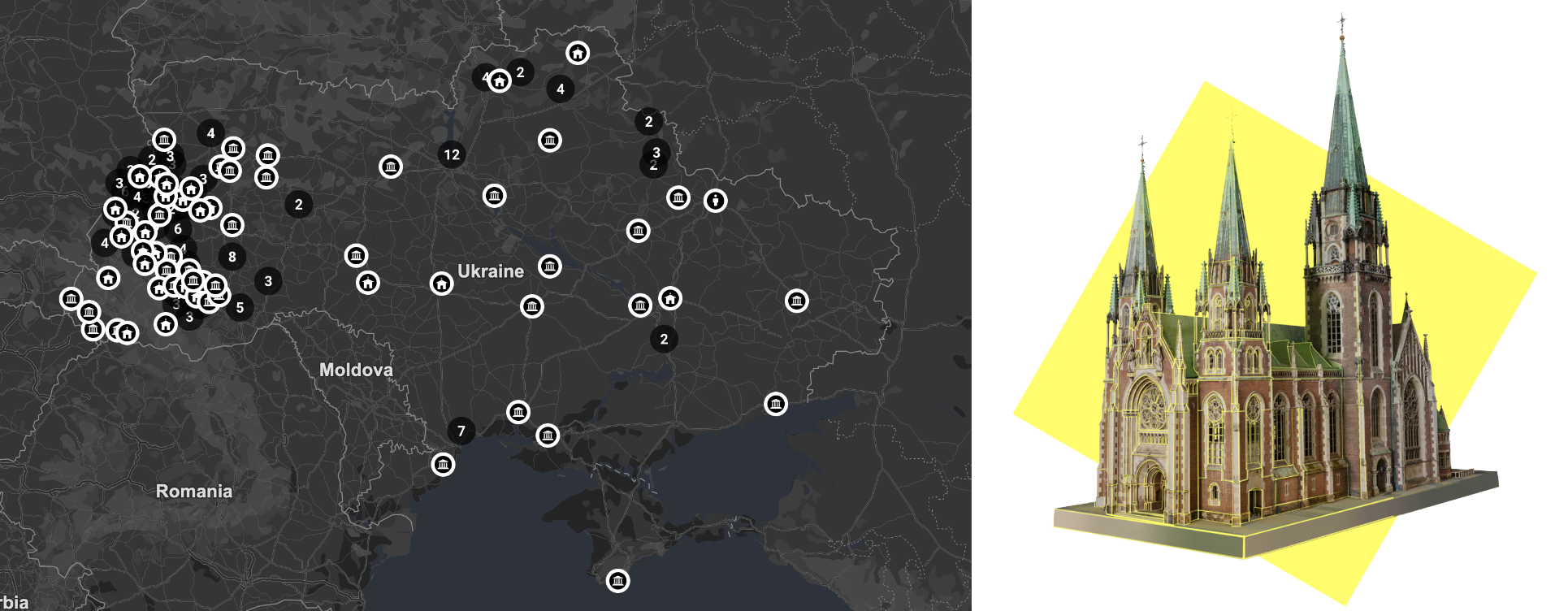
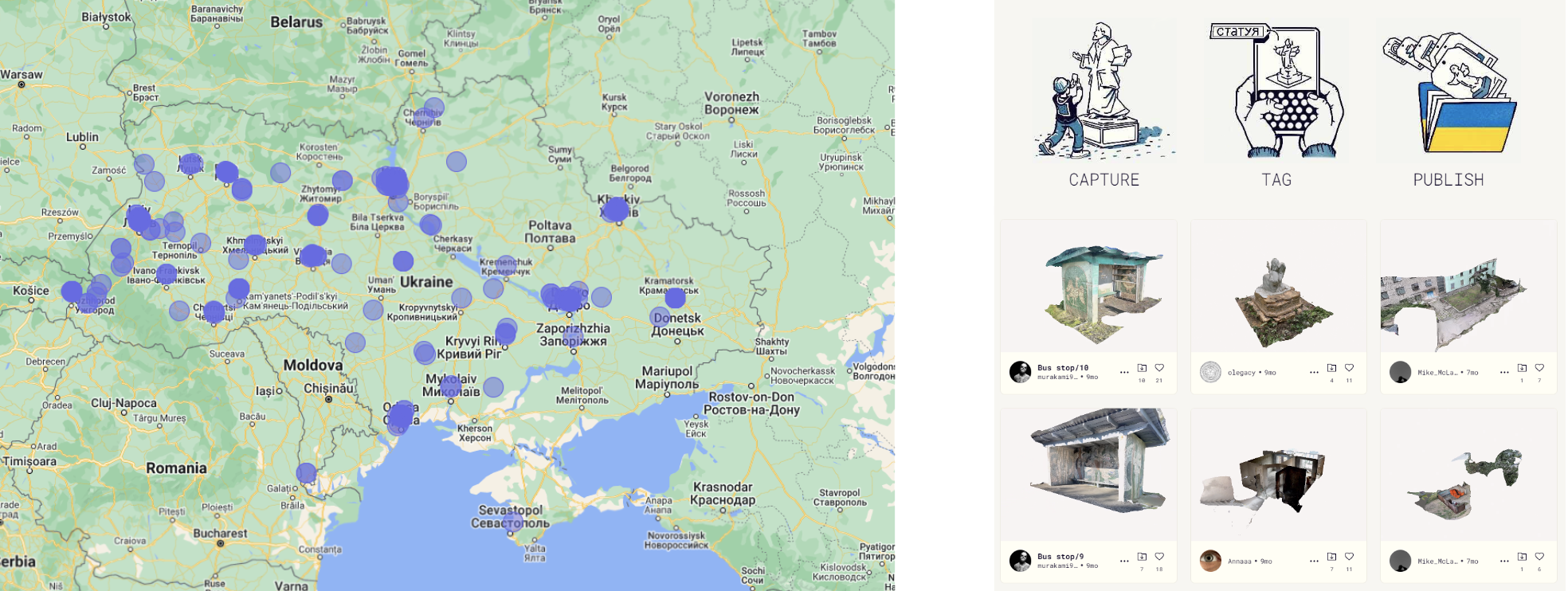
Both international organizations and research institutions are documenting Ukraine’s built heritage, whether damaged or not. Skeiron, a team who have been concerned about the fate of Ukraine’s cultural heritage for many years, aims to engrave as much of Ukraine’s architectural and artistic heritage as possible and preserve historical memory from the destructive influences of the time. The site #saveukraineheritage collects information from all 3D-scanned heritage sites in Ukraine, particularly those performed by professional or semi-professional teams. The Polycam Backup Ukraine Project, however, takes a more grassroots approach to data collection. As a cellphone app, the Polycam platform is extremely portable and easy to use, enabling people all around Ukraine to “backup” whatever item in their lives that they consider valuable or vulnerable to conflict, from art-deco bus stations, and monuments, to everyday interiors.

Many institutions, for example, the Ukraine Conflict Observatory, use satellite imagery to show the before and after the destruction. This approach enables professionals to observe and monitor the heritage sites from a distance and analyze the destruction in context. For instance, on February 14 a satellite image shows the Ivankiv Historical and Local History Museum, before the invasion. On February 27, 2022, the satellite image shows the museum has been destroyed.
Conclusion
The outcome of this project is to document, map, and analyze the efforts to digitize and protect heritage sites and memories. On the foundation laid out by the 2023 class, we will continue adding to the map of destroyed sites in Ukraine. This work is significant because it challenges the traditional and institutional understanding of heritage sites, especially during conflict. It argues that the significance of cultural heritage during conflict is complex and often intangible, and the role of bottom-up preservation efforts matters.
Sources and References
The Cultural Heritage Monitoring Lab
Damaged cultural sites in Ukraine verified by UNESCO
2023 Conflicted Urbanism Ukrainian Heritage Damage List
HeMo Ukrainian Heritage Monitoring Lab
Polycam Backup Ukraine Project SKEIRON #saveukrainianheritage Sketchfab, Ukraine Heritage Lost or At Risk